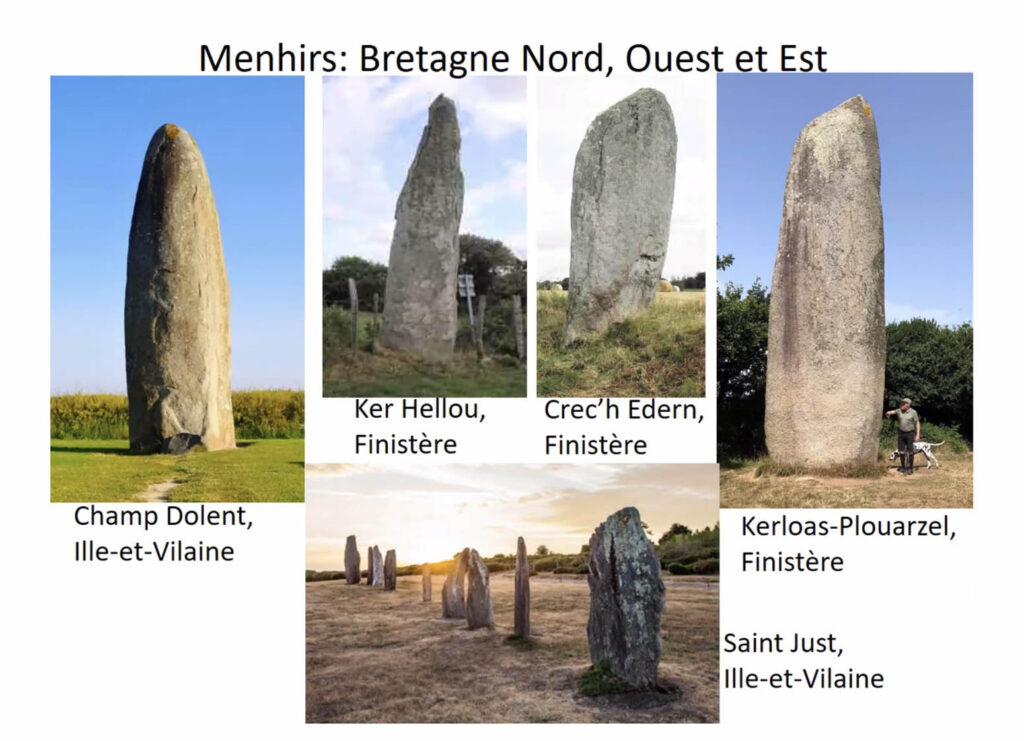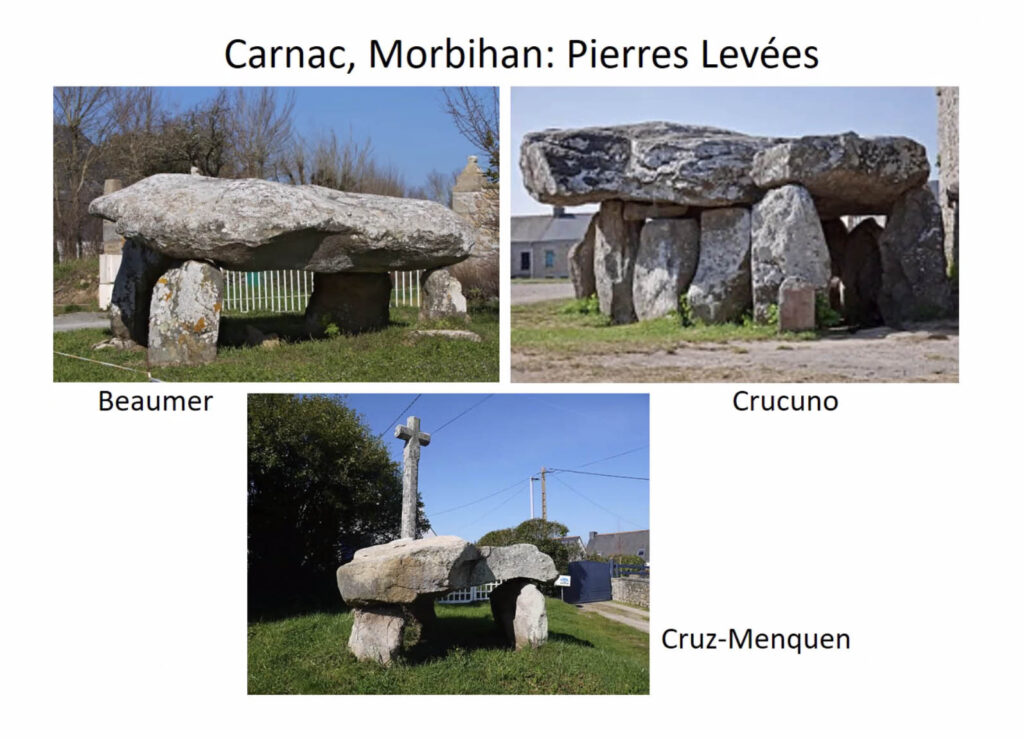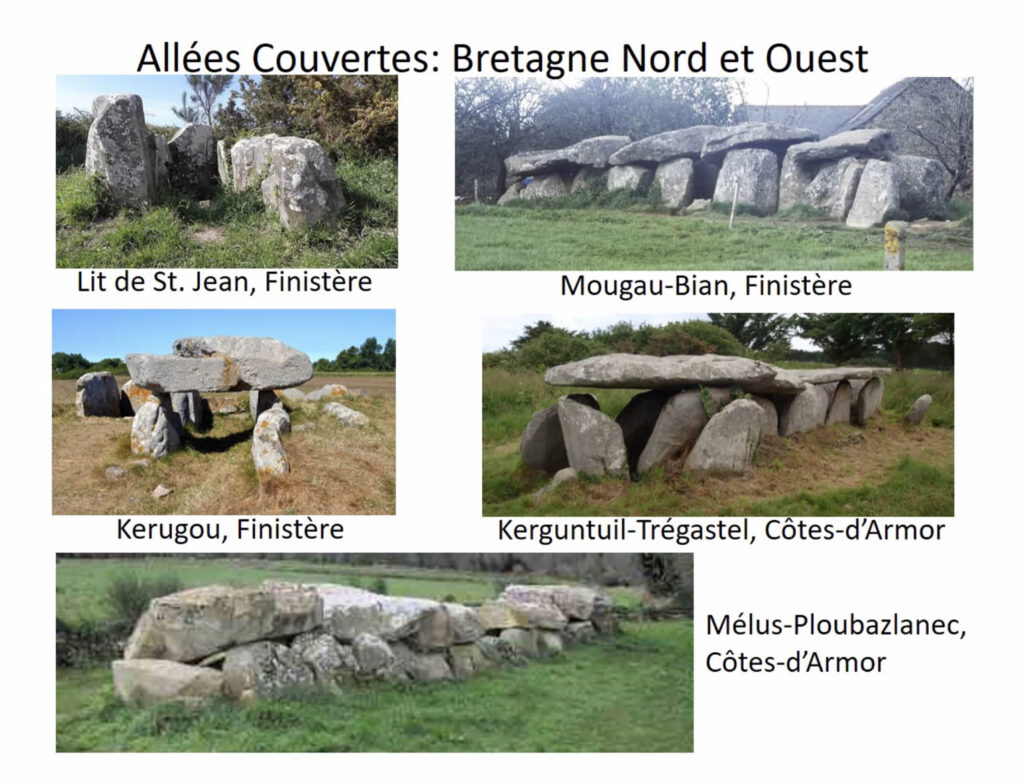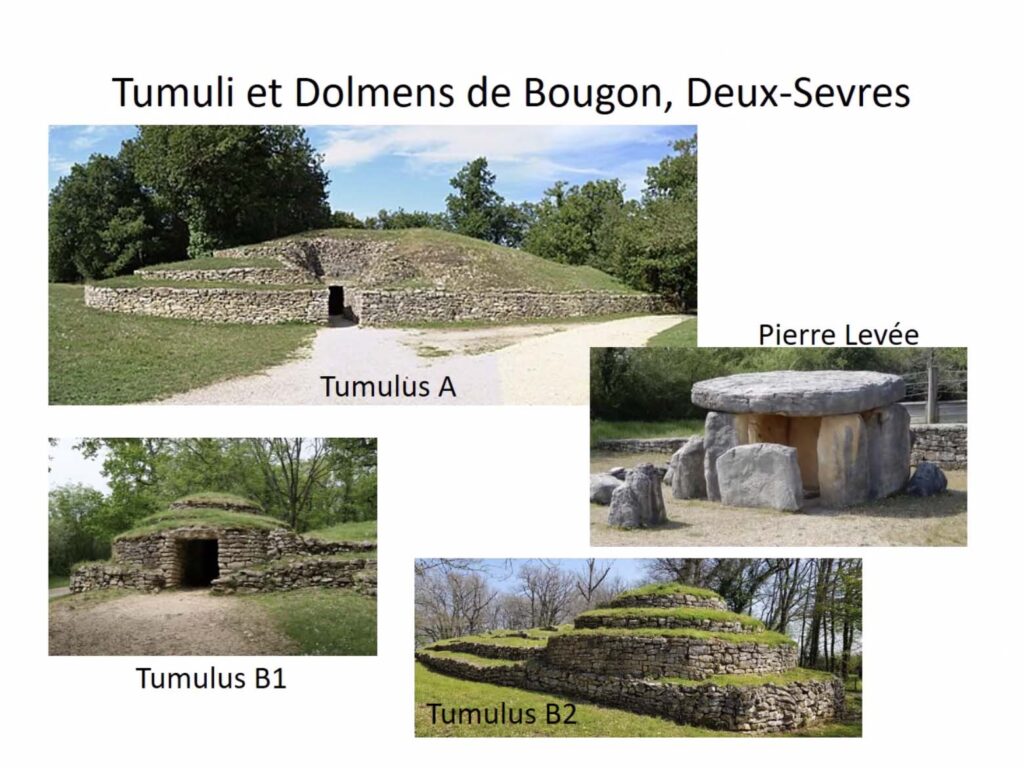While living in France for extended periods, Erik Trinkaus and his wife Kim developed a shared fascination with the 4000-year old megaliths that dot the landscape, especially in Brittany, Normandy, and the west coast. Arranged by people in the Late Neolithic era, the stones that remain in place today are enormous, some weighing many tons. During vacations the Trinkauses searched out dolmens and menhirs in even the remote countryside. Their chasse aux dolmens took them south down the coast to Aquitaine.
On October 17 Erik gave a Pause-Midi presentation that toured us through different types of megalithic monuments.
Some are single standing stones called menhirs.
Some are large blocks poised on smaller ones, called pierres levées.
Some form elongated passages, called allées couvertes.
Some are immense piles of smaller stones, called tumuli.
A few occur in large clusters (as in Carnac and Bougon), while others stand alone in the middle of fields or woods (La Roches-aux-Fées and St. Fort-sur-le-Né). Most are plain or bear only a few small carved marks, but one has complicated, incised swirls (the tumulus of Gavrinis).
Thousands of years ago, people living in small groups built these megaliths for purposes that have long been forgotten. Like Stonehenge, like the much later Pyramids, and other marvels of the prehistoric world, their creation required a massive exertion of coordinated physical energy on the part of many people. “Whatever the motivation,” Trinkaus explains, “these monuments are impressive testimony to the strength, skill, and social coordination of Stone Age farmers.” And they bear witness to the deep roots of human culture in France.
Watch Erik’s presentation here.
Erik Trinkaus is a retired paleoanthropologist and prehistorian, living in Vermont after an academic career. He has studied prehistoric remains in Europe, in Southwest Asia, and in East Asia. He worked for extended periods at the Musée de l’Homme in Paris and was closely affiliated with the Université de Bordeaux. He served on the board of the AFLCR in 2022.



